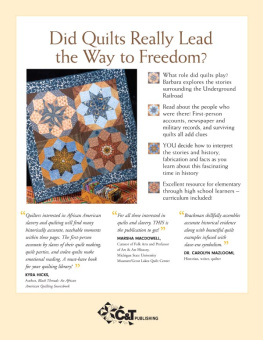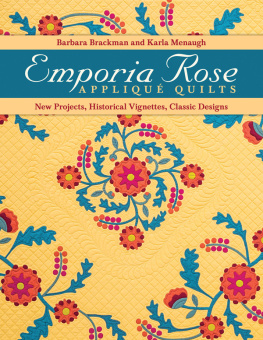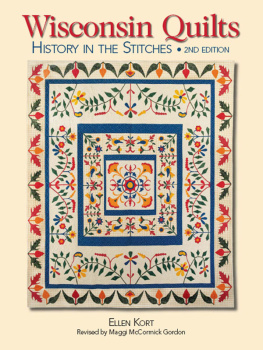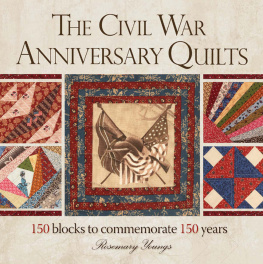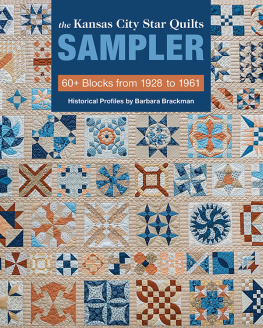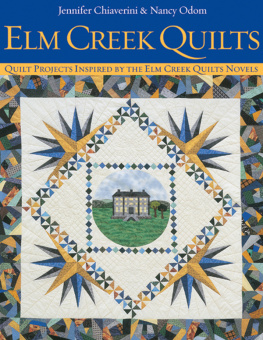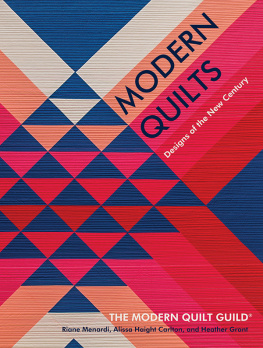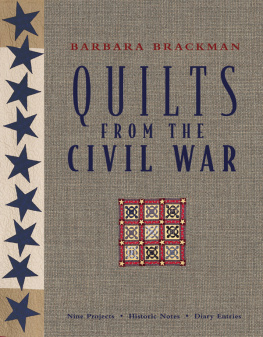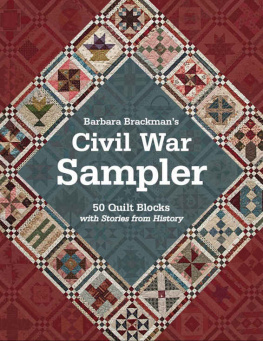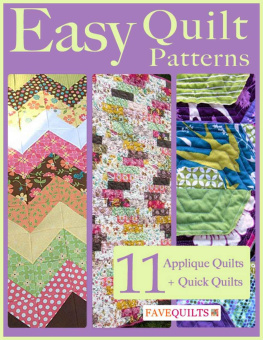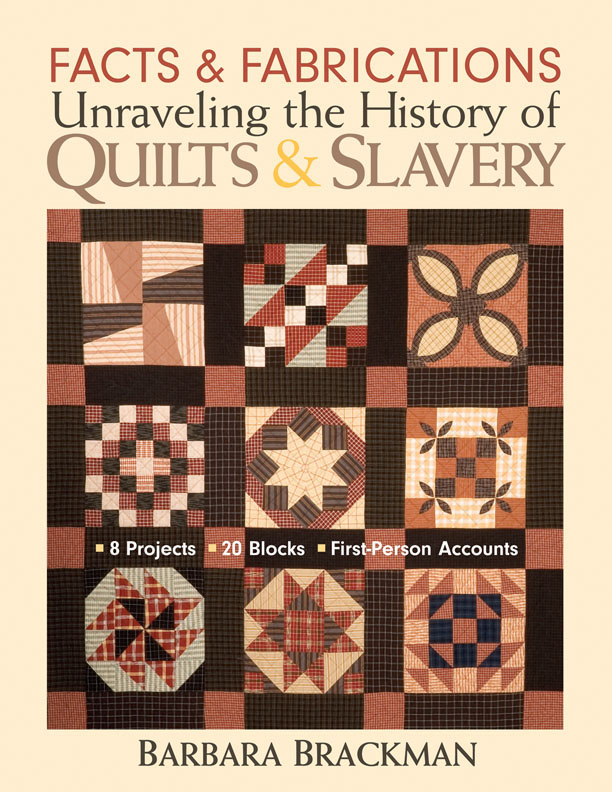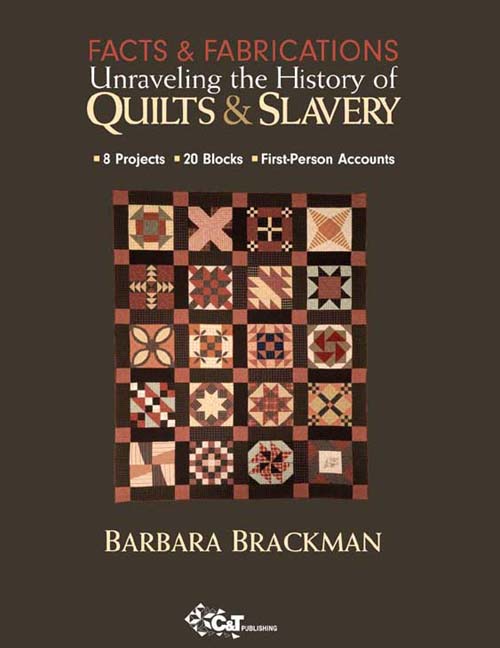
Text and Artwork 2006 by Barbara Brackman
Artwork C&T Publishing
Publisher: Amy Marson
Editorial Director: Gailen Runge
Acquisitions Editor: Jan Grigsby
Editor: Deb Rowden
Technical Editors: Robyn Gronning, Cynthia Keyes Hilton Copyeditor/Proofreader: Wordfirm Inc.
Design Director/Cover & Book Designer: Christina D. Jarumay Illustrator: Tim Manibusan Production Assistant: Matt Allen
Photography: studio shots by Jon Blumb, landscape shots by Barbara Brackman
Published by C&T Publishing, Inc., P.O. Box 1456, Lafayette, CA 94549
Front cover: Checkedy Cloth Sampler designed by Barbara Brackman, pieced by Pamela Mayfield, machine quilted by Rosie Mayhew
Back cover: Star of Africa pieced by Barbara Brackman, machine quilted by Pamela Mayfield
All rights reserved. No part of this work covered by the copyright hereon may be used in any form or reproduced by any meansgraphic, electronic, or mechanical, including photocopying, recording, taping, or information storage and retrieval systemswithout written permission of the publisher. The copyrights on individual artworks are retained by the artists as noted in Barbara Brackmans Facts & Fabrications: Unraveling the History of Quilts and Slavery. These designs may be used to make items only for personal use or donations to nonprofit groups for sale. Each piece of finished merchandise for sale must carry a conspicuous label with the following information: Designs 2006 by Barbara Brackman from the book Barbara Brackmans Facts & Fabrications: Unraveling the History of Quilts and Slavery from C&T Publishing, Inc.
Attention Copy Shops: Please note the following exceptionpublisher and author give permission to photocopy for personal use only.
Attention Teachers: C&T Publishing, Inc., encourages you to use this book as a text for teaching. Contact us at 800-284-1114 or www.ctpub.com for more information about the C&T Teachers Program.
We take great care to ensure that the information included in our books is accurate and presented in good faith, but no warranty is provided nor results guaranteed. Having no control over the choices of materials or procedures used, neither the author nor C&T Publishing, Inc., shall have any liability to any person or entity with respect to any loss or damage caused directly or indirectly by the information contained in this book. For your convenience, we post an up-to-date listing of corrections on our website (www.ctpub.com). If a correction is not already noted, please contact our customer service department at ctinfo@ctpub.com or at P.O. Box 1456, Lafayette, CA 94549.
Trademark () and registered trademark () names are used throughout this book. Rather than use the symbols with every occurrence of a trademark or registered trademark name, we are using the names only in the editorial fashion and to the benefit of the owner, with no intention of infringement.
Library of Congress Cataloging-in-Publication Data
Brackman, Barbara.
Barbara Brackmans facts & fabrications: unraveling the history of quilts and slavery : 8 projects - 20 blocks - first-person accounts / Barbara Brackman. p. cm.
Includes bibliographical references and index.
ISBN-13: 978-1-57120-364-9 (paper trade : alk. paper)
ISBN-10: 1-57120-364-8 (paper trade : alk. paper)
1. Quilting--Patterns. 2. Patchwork--Patterns. 3. SlaverySouthern StatesHistory. I. Title. II. Title: Barbara Brackmans facts and fabrications. III. Title: Facts & fabrications.
TT835.B638 2006
746.46041--dc22
2006013689
Printed in China
10 9 8 7 6 5 4 3 2
Acknowledgments
Thanks, as always, to photographer Jon Blumb, who took the studio photographs, and to editor Deb Rowden, who shaped the book into final form.
I am always indebted to the women who sew the quilts, especially Jean Stanclift and Pam Mayfield, who take my designs and add their own sense of order and taste to some rather sketchy ideas.
I taught this book as a class at Prairie Point Quilts in Shawnee, Kansas, and I am grateful to the students who finished projects in time for photography. Without them, there would be no book. Thanks to Gloria Clark, Barbara Fife, Carol Kirchhoff, Dorothy LeBoeuf, Paula Mariedaughter, Linda Birch Mooney, Ilyse Moore, Mary Louise Pick, Jeanne Poore, Diane Weber, Jean Wells, and Lavon Wynn and to other friends who loaned quilts to be included.
I spent two years reading first-person accounts and looking at photographs to educate myself about slavery and African-American history. I am grateful to the many librarians, archivists, and museum personnel who have collected the material and made it available. The book wouldnt have been possible without the Library of Congress online archive. It is indeed a national treasure.
And thanks to my friend Cuesta Benberry, who got me interested in the topic. When I write, she is always the reader I have in mind.
contents
CHAPTER
Facts and Fabrications
This book is based on facts and fabrications. The historical facts are the story of American slavery, told through the words of people who lived through that national shame. The fabrications are the symbolism Ive attached to traditional American quilt patterns to tell the story.
The link between quilts and our Civil War has long been an interest of mine. Ive written histories about quilts that were used to raise money for the Union and the Confederacy, quilts that generated funds and sympathy for the abolitionist cause, and quilts used as expressions of political opinion. This book focuses on a thread of Civil War historythe story of slavery and emancipation.
While we must take many things on faithmiracles, placebos, and the endurance of true lovehistory requires evidence. For historical evidence, we can look to personal accounts written at the time, such as diaries and letters recording immediate events. We can also read memoirs told long after the fact, written words such as autobiographies, or interviews by people who lived through the era. Published records, such as newspaper accounts and military records, add pieces to the puzzle, as do objects like surviving quilts, which can tell us much about fabric, fashion, and womens interests.
Historians require more than one fragment of evidence to support a fact. Oral traditionsfor example, family stories require the support of other types of evidence or numerous renditions of the same story from different sources. A family story that a quilt was made by a plantations slave is more credible if census records indicate the woman lived with that family. A tale that a quilt was buried to protect it from General William Shermans army has more authority if we find similar tales in other families.
Historians realize each source has limitations. A newspaper story is often colored by sensationalism or censorship; a memoir, by faulty memory or self-inflation; a diary, by bigotry or paranoia; and an interview, by miscommunication or lack of rapport.
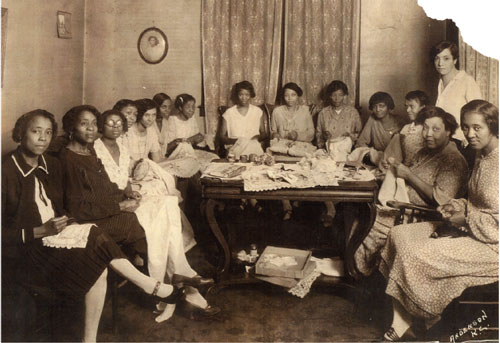
Photographs are important historical documents, but pictures of African-American women living in slavery are hard to find. Their lives after the Civil War, however, are well-documented. Here, a group of women, possibly the daughters of former slaves, meet in a needlework society, about 1920. Photograph courtesy of Terry Clothier Thompson.

